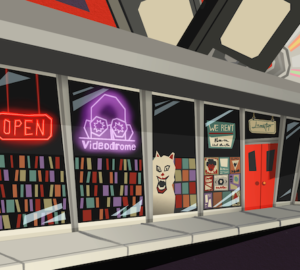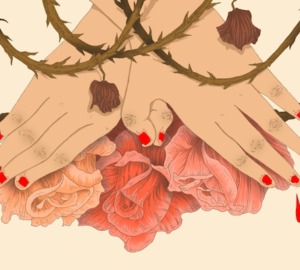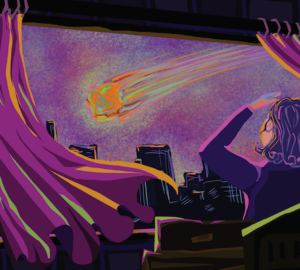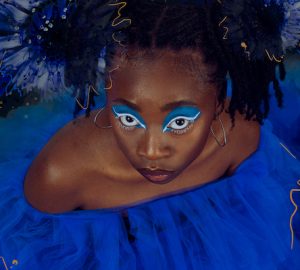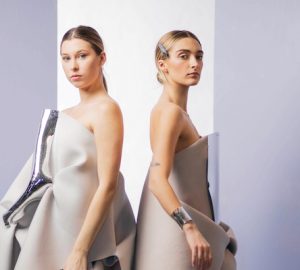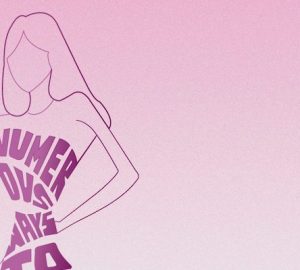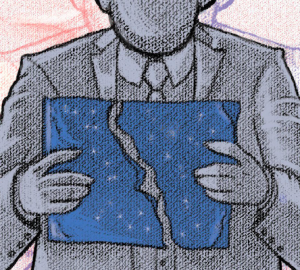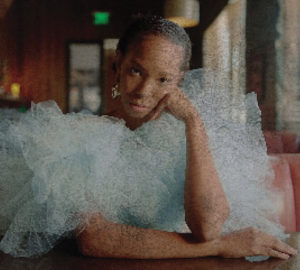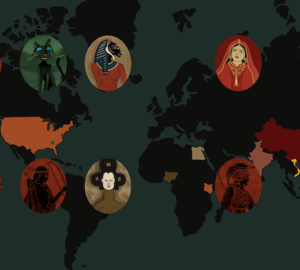WRITTEN BY RACHAEL RAMCHAND | ILLUSTRATED BY CHERRY CHANDRA
We are officially in a new decade, where lots of endless opportunities and advancements in the fashion tech industry are occurring. From new technologies and business models to the latest trends and innovations, this has all ultimately led up to a plethora of new ideas and inventions for the industry to further explore after previous decades of experimentation.
Incorporating more and more sustainable practices that consumers have an increasing demand for while taking their innovative and creative skills to a higher level, designers must keep up with it all. Not only to stay in the loop but to be the first ones to create and refine the next big thing.
As times change, so do trends. The sustainable practices carried out in the production process are quite often on consumers’ minds when making a purchasing decision. According to. an articles by Kaleigh Moore for Forbes, a 2019 report “from e-commerce personalization platform Nosto showed that of 2,000 U.S. and U.K.-based shoppers surveyed, sustainable practices and fair wages for workers were top consumer demands for modern fashion retailers.”
Business models followed by their prototypes were created based on this prevailing trend of sustainability. Consumers saw all of this become a reality, pioneered by several top brands, where they all introduced the concept of clothing that exists only digitally.
Many high-end brands are venturing into new forms of commerce to connect with consumers. For example, Gucci used augmented reality to let customers try their Ace sneakers, Tommy Hilfiger has digital showrooms, Scandinavian brand, Carlings, uses Instagram’s AR filters to allow customers to digitally change their design on a specific T-shirt, and many other brands now let customers pre-order their digital designs before going into production. This is just a small snippet of innovation successfully completed in the digital fashion world and there is still more to come this year, as many brands have yet to unveil their high-tech fashion pieces.
A trend growing in popularity, thanks to the increased awareness of design intersecting with sustainability, is the increase in rental and resale clothing services. Although there’s nothing like buying a brand-new piece of clothing and wearing it out for the first time, many people prefer the less expensive alternative — renting or purchasing second-hand clothing.
Forbes went onto mention that, from the Nest report, it was “revealed that while 52% of consumers do want the fashion industry to follow more sustainable practices, only 29% of consumers would pay more for sustainably-made versions of the same items” — which is why these rental and resale clothing companies are thriving.
These services are a great viable way for consumers to get rid of their clothes or rent clothes at an affordable price point. The combination of cheaper clothes while prating sustainable shopping makes consumers attracted to these companies. Vogue Business mentions that many luxury brands like Burberry and Harvey Nichols “saw business opportunities in customers’ growing interest in consigning.”
The luxury consignment company, The RealReal, has thrived as a result of encapsulating circular business models where brands and customers participate. The RealReal’s Q3 revenue rose 55 per cent to $80.5 million, and average order value climbed $418 from $438 million. This yea, it is expected that there will be a lot more luxury brands taking part in the consignment of their clothing, as it is an area that is growing immensely.
There are smaller-scale businesses that are also prating sustainability in innovative ways (whether intentionally or not). The Canadian start-up business, Samara, recently found a way to produce premium quality bags using apple skin.
An on-demand apparel company, Unspun, uses 3D scanning and fit algorithms to generate digital consumer sizing so customers know their size without hassle, and Frankie Collective, another Canadian business, creates women’s streetwear designs by focusing on salvaging vintage garments that otherwise would end up in a landfill and their textile scraps are recycled and repurposed to eliminate waste.
Sustainability is currently playing a large role in the production and consumption decisions made in the fashion and tech industry. All of these companies, whether big or small in popularity, have common traits that have placed them ahead of the game. Persistency, consistency and creativity — without having them all — is difficult to maintain relevance in an industry that is always changing.



